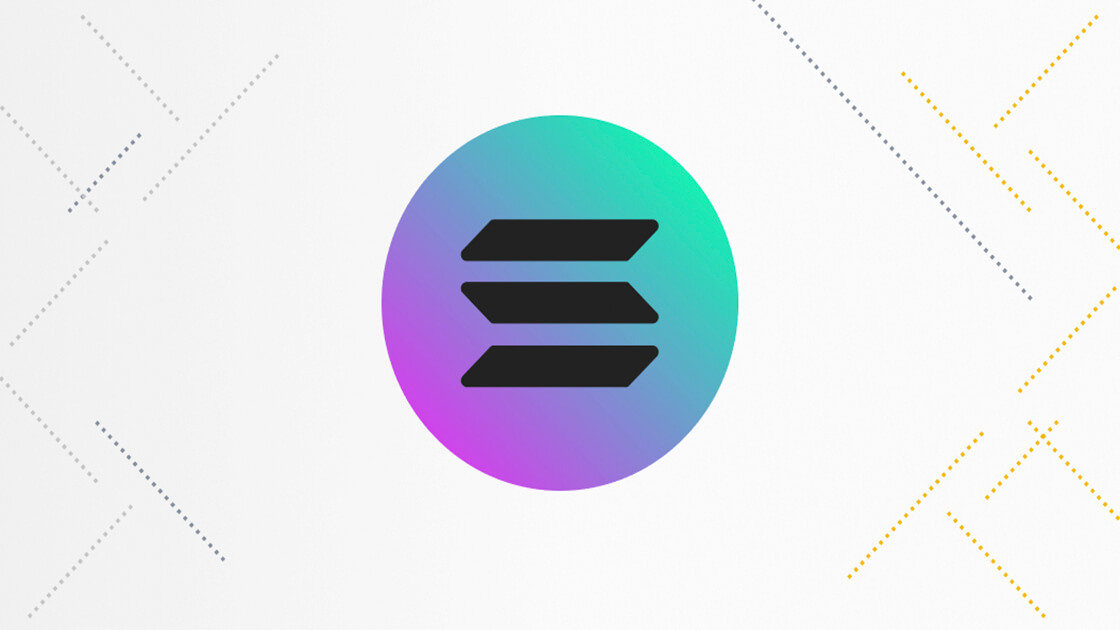The name Solana is inspired by the coastal beach in California, the state where Solana Labs is located.
Created in 2017, Solana is a blockchain that offers fast, secure, and scalable crypto activities. The platform's team includes previous technologists from Qualcomm, Intel, Netscape, and Google. Its founder and CEO Anatoly Yakovenko has software engineering experience in Qualcomm and Dropbox.In the funding round, Solana attracted $25 M investments from companies like Multicoin Capital, Distributed Global, Blocktower Capital, and others.
How does Solana work?
Solana is a layer 1 blockchain. Its scaling is implemented at the rate of Moore's law, which states that processing speeds double every two years. The network creates a block every 400 milliseconds, which means 50.000 transactions per second. In terms of block number, Solana got ahead of Ethereum. It is called the first web-scale project as its transactional capacity is similar to the internet.
The term scalability indicates how many transactions can take place per second (this capability is called transactions per second (TPS)). Solana has a global network of 350 validators, ensuring network security and stability.
Introducing Proof of History
Proof of History (PoH) is one of the main innovations that the Solana protocol brought. As the name implies, rather than operating according to validators' consensus on time arrangements, the system requires proof that activities happened.
In contrast to Proof of Work and Proof of Stake mechanisms, PoH requires each Solana validator to maintain its timer. To achieve this it must encode the course of time through sequential-hashing verifiable delay function (VDF) SHA-256.
Cryptographic guarantees ensure the security of the network. Following the existing messages in the ledger, the network votes if the operation was valid or not. To track the sequence of blocks produced, the network uses the Proof of Stake consensus. Using these techniques, Solana is capable of running up to 65.000 transactions per second.
Thus, Solana saves considerable time and allows high-speed and secure transactions at the same time.
Trending: Kevin O'Leary promises to increase investment in digital assets
The SOL coin
SOL is the native token of Solana corresponding to the ERC 20 standard. During its 5 funding rounds, the token raised over $25 M. It was launched in March 2020. SOL delivers core functions on the network. To become a validator or leader holders need to stake SOL tokens. They also allow owners to get staking rewards, pay transaction fees and participate in the governance.
The token's maximum supply is 489 million. Of this total supply, 36.2% (about 160 million SOL) went to private investors. 12.8% (about 65 million SOL) has been doled out to the Solana team.
10.4% (about 52 million SOL) has been addressed to the Solana Foundation, a non-profit establishment that aims to drive mass adoption. The remaining 39% (about 195 million SOL) has been directed to the Solana community as validator node rewards.
Partnerships
The number of projects operating on Solana has been growing. Among the network's major partners are crypto derivatives exchange FTX, decentralized oracle network Chainlink, and the company Tether.
-
The outcome of the partnership between the FTX team and Solana is the non-custodial DEX Serum Project launched in August 2020. The platform had a huge success with its native SRM token surging 1500% in 12 hours after listing on various exchanges.
Trending: Salvadorans are against buying bitcoins at the expense of the budget
-
Solana and ChainLink teamed up to create fast oracle data for Solana dApps.
-
In March 2021 the stablecoin Tether (USDT) went live on the Solana blockchain.
-
The blockchain also built partnerships with cryptocurrency trading platforms OKEx and MXC to launch 2 strategic investment funds.
Final thoughts
Solana is one of the fastest advancing blockchains. The number of Dapps, DeFi, NFT, and stablecoin projects adopting Solana's solutions has been growing.
Trending: Support.com Stock Surges After Merger with BTC Mining Firm
One of the most popular projects built on the Solana blockchain is the automated market maker (AMM) and liquidity provider Raydium. It was launched on February 21, 2021. Raydium is a DeFi project that integrates Serum's order books in addition to liquidity available in swap pools. The platform's total value locked (TVL) crossed $800 M in three months.
The ecosystem also introduces the first Inicial DEX Offering (IDO) Solstarter, which empowers launchpads to raise liquidity in a decentralized way. The project is in the early stages of development and Solstarter tokens are not yet live.
More news is expected to come.
To develop the network, there will be Solana Season Hackaton from May 15, 2021, to June 7. People from all over the world can join the event. Along with all the above mentioned, the network's native token reaches new highs. On April 25, 2021, SOL set a record high of $48.






